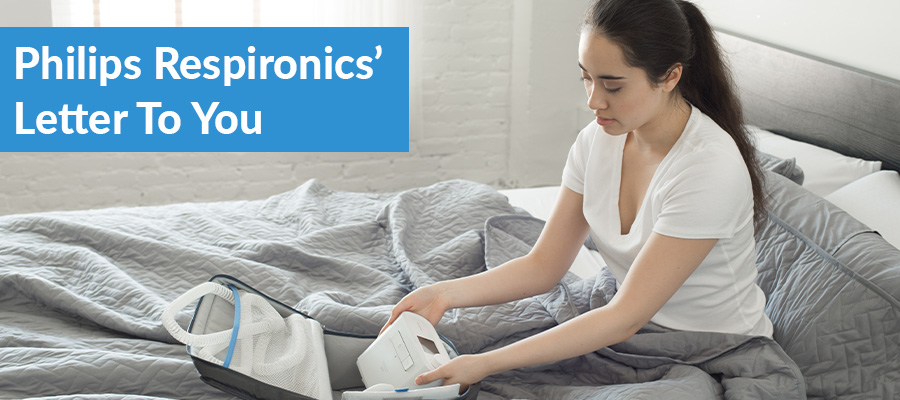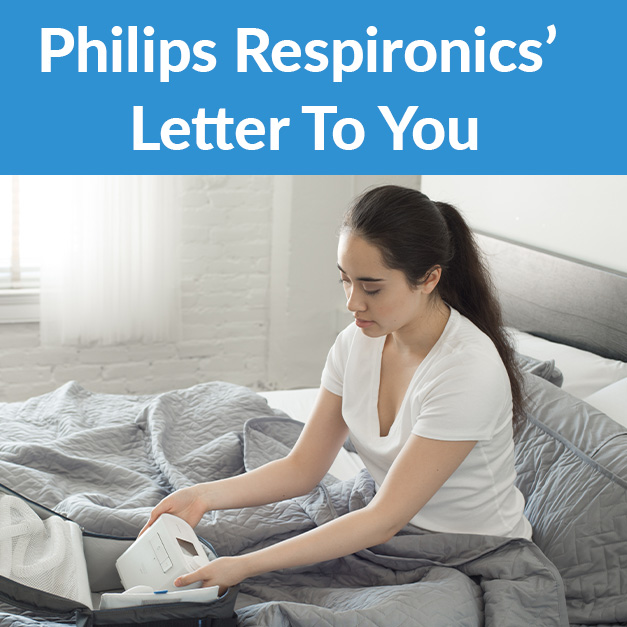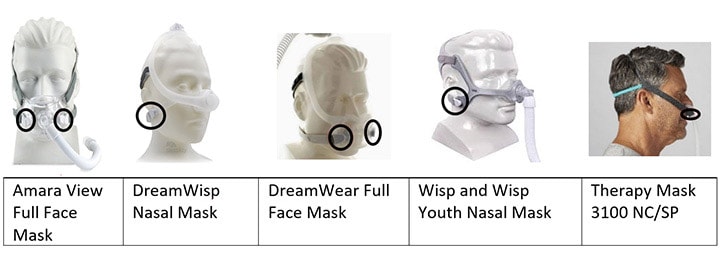

We here at Easy Breathe take our customers’ health seriously, and want to keep everyone as informed as possible on latest updates of CPAP technology. We’ve just been informed of a change by the FDA in regards to recommendations around magnets and medical devices. Many CPAP masks utilize small magnets in their design, and Philips Respironics’s masks are especially known for this. They’ve reached out with an update on policy, and we want to share that directly with you. You can see the update on their site, or read it as we’ve replicated it below for easier reading.
The Update from Philips
“Philips Respironics alerts customers worldwide of updated instructions and labeling of specific sleep therapy masks that contain magnetic headgear clips due to potential risk of serious injury
These masks may continue to be used according to the updated instructions and labeling if patients or people in close proximity to them do not have implanted metallic medical devices or metallic objects in the body
Philips Respironics is alerting users of certain CPAP or Bi-Level PAP therapy masks with magnetic headgear clips or straps that these devices should not be used by or near patients and their household members, caregivers and bed partners who have metallic implanted devices or metallic objects (such as metallic splinters) in the body. The magnetic headgear clips are used to attach the headgear straps to the masks, which is a method that is commonly used in the sleep therapy devices industry.
This is a voluntary notification to users of specific CPAP or Bi-Level PAP therapy masks containing such magnetic clips to inform them of the updated instructions and labeling. All users should read and follow Philips Respironics’ voluntarily updated warning and added contraindication described below. This represents a new and industry-leading practice.
Contraindication: Use of the mask is contraindicated for patients and their household members, caregivers and bed partners that may be in close vicinity to patients using the masks, that have implanted devices that may be affected by magnets, including but not limited to:
- Pacemakers
- Implantable cardioverter defibrillators (ICD)
- Neurostimulators
- Magnetic metallic implants/electrodes/valves placed in upper limbs, torso, or higher (i.e., neck and head)
- Cerebral spinal fluid (CSF) shunts (e.g., ventriculo peritoneal (VP) shunt)
- Aneurysm clips
- Embolic coils
- Intracranial aneurysm intravascular flow disruption devices
- Metallic cranial plates, screws, burr hole covers, and bone substitute devices
- Metallic splinters in the eye
- Ocular implants (e.g., glaucoma implants, retinal implants)
- Certain contact lenses with metal
- Implants to restore hearing or balance that have an implanted magnet (such as cochlear implants, implanted bone conduction hearing devices, and auditory brainstem implants)
- Magnetic denture attachments
- Metallic gastrointestinal clips
- Metallic stents (e.g., aneurysm, coronary, tracheobronchial, biliary)
- Implantable ports and pumps (e.g., insulin pumps)
- Hypoglossal nerve stimulators
- Devices labeled as MR (Magnetic Resonance) unsafe
- Magnetic metallic implants not labeled for MR or not evaluated for safety in a magnetic field
- Pacemakers
- Implantable cardioverter defibrillators (ICD)
- Neurostimulators
- Magnetic metallic implants/electrodes/valves placed in upper limbs, torso, or higher (i.e., neck and head)
- Cerebral spinal fluid (CSF) shunts (e.g., ventriculo peritoneal (VP) shunt)
- Aneurysm clips
- Embolic coils
- Intracranial aneurysm intravascular flow disruption devices
- Metallic cranial plates, screws, burr hole covers, and bone substitute devices
- Metallic splinters in the eye
- Ocular implants (e.g., glaucoma implants, retinal implants)
- Certain contact lenses with metal
- Implants to restore hearing or balance that have an implanted magnet (such as cochlear implants, implanted bone conduction hearing devices, and auditory brainstem implants)
- Magnetic denture attachments
- Metallic gastrointestinal clips
- Metallic stents (e.g., aneurysm, coronary, tracheobronchial, biliary)
- Implantable ports and pumps (e.g., insulin pumps)
- Hypoglossal nerve stimulators
- Devices labeled as MR (Magnetic Resonance) unsafe
- Magnetic metallic implants not labeled for MR or not evaluated for safety in a magnetic field
Patients should stop using the affected mask if the implant/medical device is contraindicated against the mask magnets. Patients should consult their physician immediately to determine if another mask can be used for their therapy. In the interim, switch to a non-magnetic mask if available, for continued therapy. Patients should properly dispose of the mask that has magnets after an alternative is obtained.
These masks may continue to be used according to the updated instructions and labeling if patients or people in close proximity to them do not have implanted metallic medical devices or metallic objects in the body.
Warning: Magnetic clips with a field strength of less than 400 mT are used in the mask.* With the exception of the devices identified in the contraindication, ensure that the mask is kept at least 6 inches (approx. 15 cm) away from any other medical implants or medical devices that can be impacted by the magnetic fields to avoid possible effects from localized magnetic fields. This includes household members, caregivers, and bed partners that may be in close vicinity to patients that use the masks.
Impacted masks include:


More than 17 million masks containing magnetic clips have been distributed by Philips Respironics to date. As of September 2022, Philips Respironics has received 16 reports of patients suggesting that the mask magnets may have impacted their medical devices including pacemaker interference, pacemaker failure leading to replacement, need of shunt adjustment, resetting of automatic implantable cardioverter defibrillator (AICD), seizures, defibrillator shutting off periodically, arrhythmia, irregular blood pressure, change in heartbeats, and cognitive issues.
Patients with questions may contact Philips Respironics’ customer service at 1-800-345-6443, (Monday – Friday; 8:30 AM ET to 8:00 PM ET) for more information about non-magnetic mask options. Patients may also contact their Durable Medical Equipment (DME) provider, which supplied the masks affected by this notice.
Any adverse events experienced with the use of masks containing magnetic clips should be reported to the FDA’s MedWatch Program by phone at 1-800-FDA-1088, by fax at 1-800-FDA-0178, by mail at MedWatch, HF-2, FDA, 5600 Fishers Lane, Rockville, MD 20852-9787, or on the MedWatch Web site at www.fda.gov/medwatch.
This voluntary medical device corrective action has been reported to the regulatory agencies in the countries where these masks are available.”
Three Ways Easy Breathe Can Help
Unfortunately, it is not easy to find a CPAP mask without magnets in this modern age. In light of this, we want to highlight some magnet free mask options we have available for any who realize they need to switch. You can click the text below to find out more about each offer:
- AirFit N30i Nasal Mask: CLICK HERE for a comfortable nasal cushion mask that fits under you nose with no magnets.
- AirFit P10 Nasal Pillow Mask: CLICK HERE for a simple nasal pillow mask with no magnets.
- Need more options?: Call us at (866) 564-2252 and a CPAP expert will help you find the mask that is right for you.
- AirFit N30i Nasal Mask: CLICK HERE for a comfortable nasal cushion mask that fits under you nose with no magnets.
- AirFit P10 Nasal Pillow Mask: CLICK HERE for a simple nasal pillow mask with no magnets.
- Need more options?: Call us at (866) 564-2252 and a CPAP expert will help you find the mask that is right for you.










